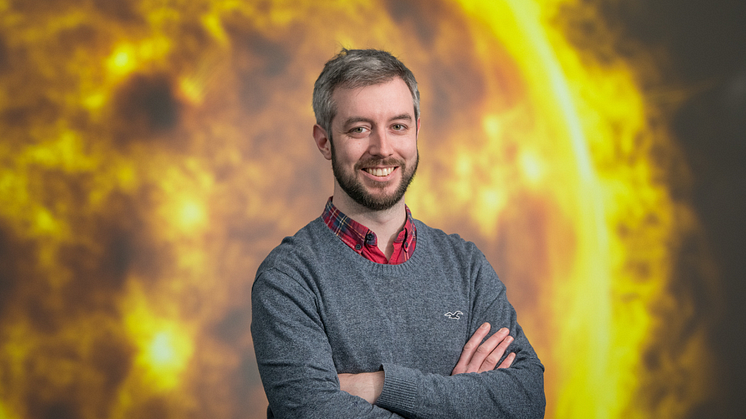
Press release -
Weather reports on the Sun could lead to safer space travel, thanks to Northumbria research
Astronauts could one day tune in to the morning’s space weather report to see whether they should take that trip to Mars, thanks to research led by Northumbria University, Newcastle.
Looking forward, if humankind is to regularly engage in space tourism, asteroid mining or manned trips to other worlds, then travellers will be exposed to the elements once they leave the safety of Earth’s protective magnetic field.
New research published in the journal Nature Communications this month has revealed for the first time that magnetic waves travelling across the Sun’s surface can accelerate solar winds.
With wind speeds varying between a gentle 500,000 miles per hour to a gusty two million miles per hour, the Sun’s supersonic wind power could prove hazardous to satellites and space travellers moving outside of the Earth’s barrier.
Dr Richard Morton, Leverhulme Trust Early Career Research Fellow in Northumbria’s Department of Mathematics and Information Sciences, used state-of-the-art solar telescopes to observe the outer most layer of the Sun’s atmosphere to assess how the Sun influences weather in space.
His team, which includes researchers from the National Centre for Atmospheric Research (NCAR) and the Research Institute in Astrophysics and Planetology, used combined data from a telescope based in Hawaii and NASA’s solar satellite to investigate powerful magnetic waves, known as Alfvén waves, where the Sun’s wind originates.
Their research revealed that the magnetic waves travel in both directions along the Sun’s magnetic field. This leads to an interaction between the oppositely directed waves, which allows the energy they carry to be broken down and accelerate the solar wind.
Theorists had predicted this feature of the waves, but this was the first time it has been proved.
Dr Morton said that space weather originating from the Sun could cause changes in geo-magnetic activity around the Earth, affecting power networks, satellites and computer systems.
“The solar wind is unlike anything experienced on Earth,” said Dr Morton.
“It is an extremely fast moving stream of million-degree gas that carries away up to a billion kilograms of the Sun’s atmosphere per second. Exactly what allows the winds to reach such speeds and provides the force to remove such large amount of solar material has puzzled scientists for a while now.
“We hope that our observations will help with the prediction and monitoring of the Sun’s weather. Then, maybe one day, people will tune in to the morning’s space weather report to see whether they should take that trip to Mars.”
Space weather forecasts may seem futuristic but such reports are already used by a host of agencies. The UK government is concerned enough to add space weather to the National Risk Register and, in late 2014, it set up the Met Office Space Weather Operations to monitor it and provide an assessment of the risks.
Northumbria University’s solar physics research group is also involved in an international project to build the world’s biggest and most revolutionary solar telescope. The Daniel K Inouye Solar Telescope, known as DKIST, is based on Haleakala Mountain in Maui, Hawaii.
With a four-metre diameter primary mirror, the super-telescope can pick up unprecedented detail on the Sun’s surface – the equivalent of being able to examine a £1 coin from a distance of 100km.
Students on Northumbria’s Physics with Astrophysics degree will have the opportunity to learn how to study the Sun using solar telescopes and data from science missions. The course also teaches aspects of modern astrophysics, including modules on the Sun and space weather.
The team’s findings have been published in Nature Communications, an online journal dedicated to publishing high-quality research in all areas of the biological, physical and chemical sciences.
For more details visit http://www.nature.com/ncomms/2015/150727/ncomms8813/full/ncomms8813.html
Topics
Categories
Northumbria is a research-rich, business-focussed, professional university with a global reputation for academic excellence. To find out more about our courses go towww.northumbria.ac.uk
If you have a media enquiry please contact our Media and Communications team at media.communications@northumbria.ac.uk or call 0191 227 4571.















